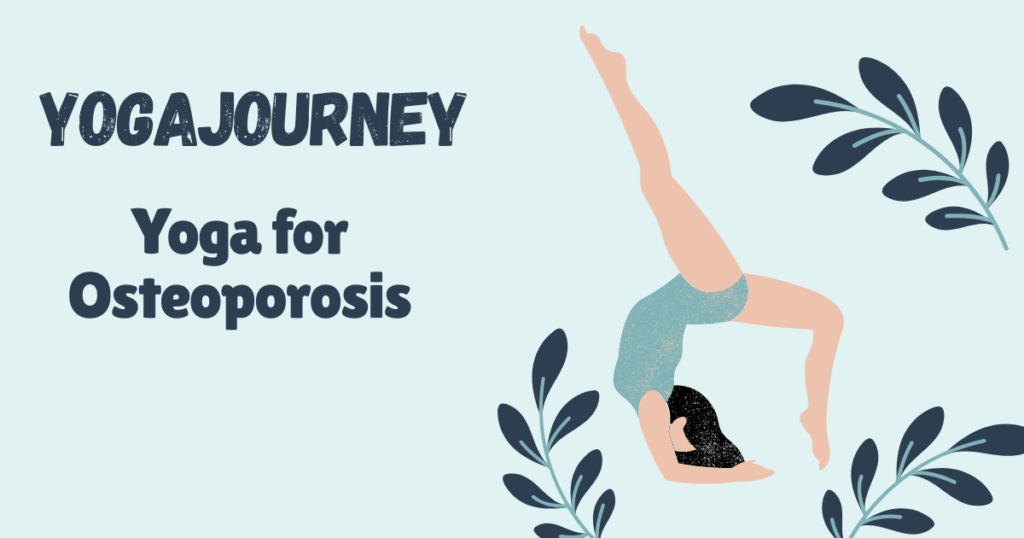
Yoga for Osteoporosis: Strengthening Bones and Enhancing Mobility
Osteoporosis is a widespread condition that affects millions of people, particularly women. It results in the thinning and weakening of bones, making them more susceptible to fractures. Despite being commonly referred to as a “silent disease” because it often has no symptoms, osteoporosis is preventable and manageable with the right lifestyle changes. Yoga is one of the most effective ways to strengthen bones, promote mobility, and improve overall health without adding stress to the joints. By combining weight-bearing exercises, balance work, and breath control, yoga offers a holistic approach to treating and managing osteoporosis.
In this article, we’ll explore how yoga can help prevent and treat osteoporosis, the best yoga poses to build bone strength, tips for increasing intensity safely, and dietary considerations for bone health.
Weight-Bearing Yoga: Building Stronger Bones
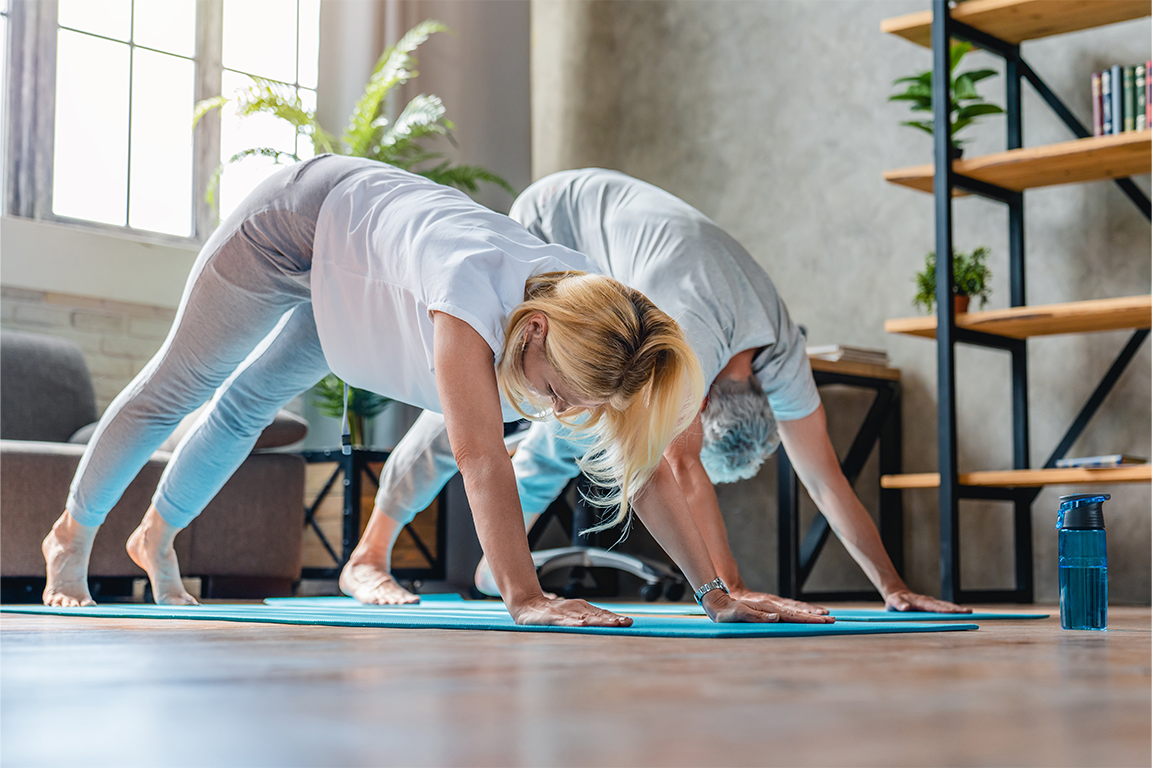
One of the most effective ways to treat osteoporosis through yoga is by engaging in weight-bearing exercises. These are movements where the body works against the force of gravity, helping stimulate bone growth and density. Yoga naturally incorporates weight-bearing exercises through various standing and balancing poses. Here’s how yoga can benefit bone health:
1. Standing Poses
Standing poses engage the muscles in the legs, hips, and lower spine, which are key areas prone to bone loss. These poses help load bones in these areas, stimulating bone strength and preventing further weakening.
- Warrior 1 and Warrior 2: These lunges are particularly effective at targeting the bones and muscles of the legs and hips.
- Chair Pose (Utkatasana): Strengthens the legs and engages the lower back, promoting both bone density and balance.
2. Balancing Poses
Balancing poses not only improve bone strength but also reduce the risk of falls by enhancing stability and coordination. For those with osteoporosis, balancing poses should be practiced cautiously, with support such as a chair or wall if needed.
- Tree Pose (Vrksasana): A great pose for building strength in the legs and improving stability.
- Warrior 3 (Virabhadrasana III): This pose helps strengthen the legs, core, and spine while promoting balance.
3. Soft Backbends
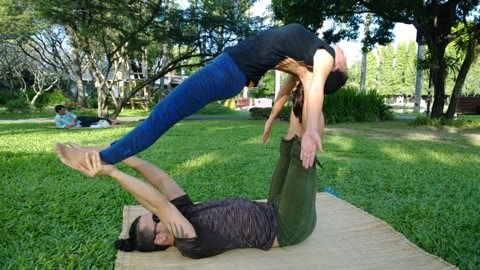
Backbends help firm the spine and can prevent or even reverse kyphosis (the over-arching of the upper spine), a common issue in those with osteoporosis. These poses also help stimulate the thyroid gland, which regulates bone health.
- Sphinx Pose (Salamba Bhujangasana): A gentle backbend that strengthens the spine.
- Cobra Pose (Bhujangasana): Firmly engages the spine and opens the chest.
- Bridge Pose (Setu Bandhasana): Builds spinal strength and stimulates the thyroid.
4. Upper-Body Strengthening
Building strength in the upper body is also important for overall bone health. Yoga poses that engage the arms and shoulders can help strengthen bones in the upper body.
- Downward-Facing Dog (Adho Mukha Svanasana): Strengthens the arms, shoulders, and spine.
- Plank Pose (Phalakasana): Builds strength in the arms, core, and wrists.
- Crab Pose: Builds strength in the arms and upper back.
Building Stronger Bones Requires Increasing Intensity
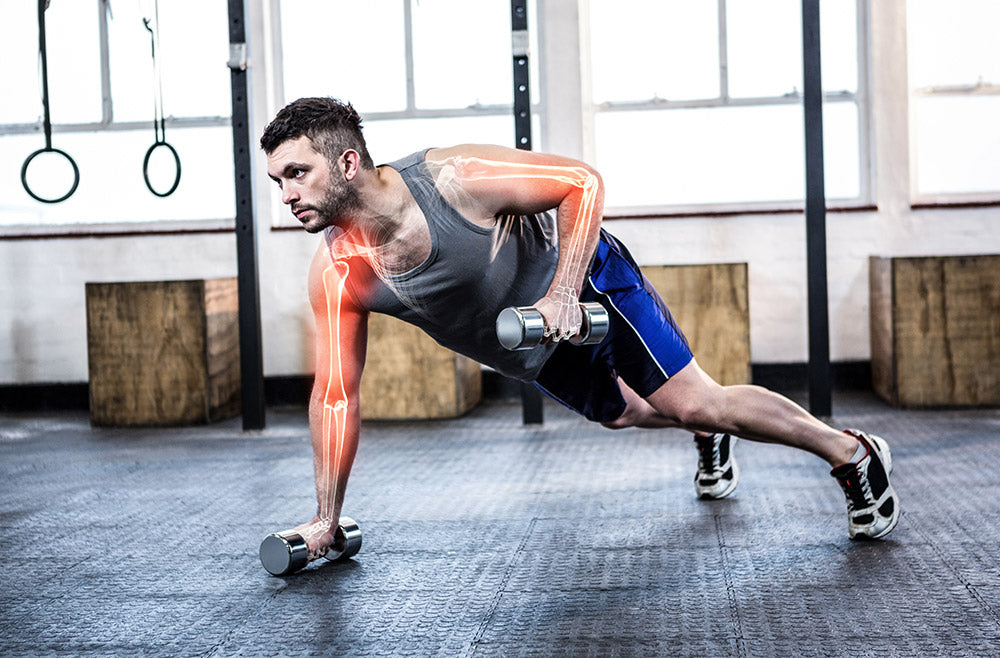
While yoga can be incredibly beneficial for treating osteoporosis, consistency and gradual progression are key. If you’ve been diagnosed with osteoporosis or osteopenia (low bone density), always consult with your doctor before beginning a new exercise routine. Here are some tips for boosting bone strength through yoga:
- Aim for consistency: Aim to practice yoga 5 times a week for at least 30 minutes per session. This helps to continually stimulate bone strength and stability.
- Increase intensity slowly: Start with simpler, gentler poses to build strength and gradually increase the intensity and duration of your practice.
- Challenge yourself: As you progress, add more challenging poses such as Inclined Plane Pose (Purvottanasana), Crane Pose (Bakasana), Bow Pose (Dhanurasana), and Wheel Pose (Urdhva Dhanurasana). These poses require greater strength and stability, further stimulating bone growth.
Advanced Poses to Build Bone Strength:
- Inclined Plane Pose (Purvottanasana): Strengthens the arms, shoulders, and spine.
- Crane Pose (Bakasana): A balancing pose that engages the core and arms.
- Bow Pose (Dhanurasana): Deep backbend that strengthens the spine and stimulates the chest.
- Warrior 3 Pose (Virabhadrasana III): A dynamic balancing pose that strengthens the legs and spine.
Cautions and Contraindications for Osteoporosis

Yoga is an excellent practice for managing osteoporosis, but certain poses must be approached with caution. Kyphosis—a common condition associated with osteoporosis—can make deep backbends dangerous. If you have kyphosis or severe osteoporosis, consider avoiding the following poses or practice them gently under supervision:
- Deep backbends: Such as Camel Pose (Ustrasana), Bow Pose (Dhanurasana), and Wheel Pose (Urdhva Dhanurasana). These can overstretch and strain the spine, especially if it is already weakened.
- Forward bends and twists: People with osteoporosis should practice these poses gently, as they may put too much pressure on the spine.
- Jumping poses: High-impact or “jumping” into and out of poses, as in Vinyasa or Ashtanga yoga, can stress fragile bones and joints. Move slowly and with control to avoid injury.
Always practice mindful, slow movements and listen to your body. If you feel discomfort, stop the pose and modify it.
Yogic Diet for Bone Health
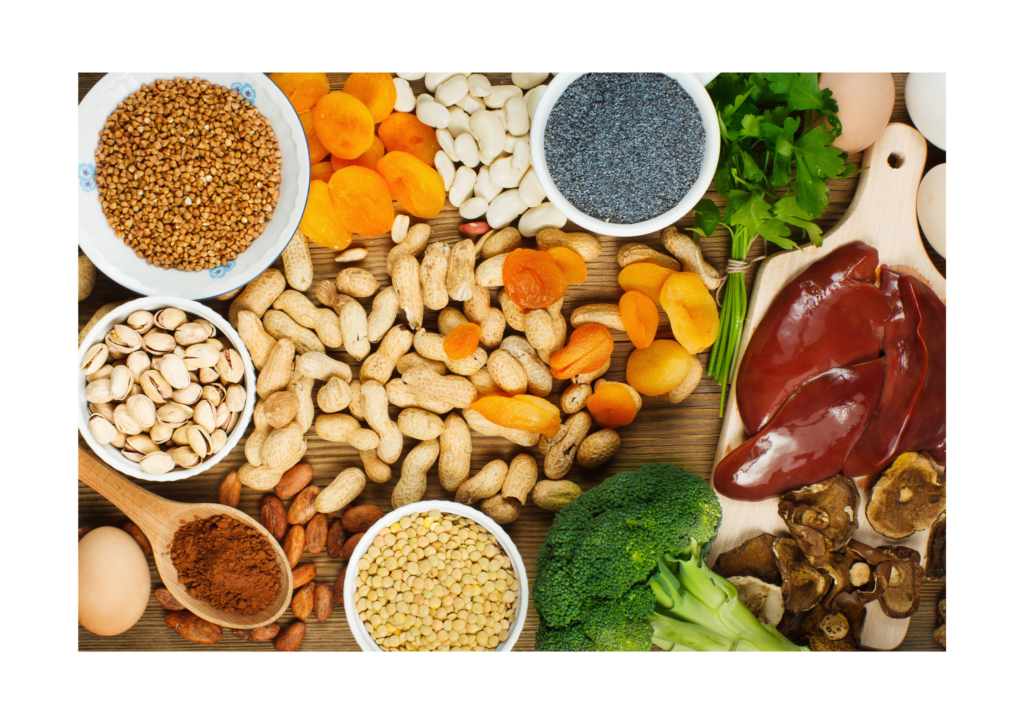
A well-balanced diet is essential for supporting bone health and preventing osteoporosis. A yogic diet rich in calcium, vitamin D, and other bone-strengthening nutrients plays a key role in maintaining strong bones.
Key Nutrients for Bone Health:
- Calcium: Found in dairy products, leafy greens (like spinach and kale), and fortified plant-based milks.
- Vitamin D: Essential for calcium absorption. Sun exposure is the most natural source, but foods like fortified cereals, salmon, and egg yolks can also provide vitamin D.
- Omega-3 Fatty Acids: Found in nuts, seeds (especially flax and chia), and fatty fish like salmon, omega-3s help maintain bone density.
- Vitamin C: Vital for collagen production, which supports bone structure. Citrus fruits, strawberries, and bell peppers are good sources.
- Magnesium: Supports calcium absorption and bone formation. Found in nuts, seeds, and whole grains.
Avoid excessive intake of sodium, animal protein, caffeine, alcohol, and sugary foods, which can deplete calcium and negatively impact bone health. Incorporating a balanced, nutrient-rich diet with plenty of fresh fruits, vegetables, and whole grains will help support bone strength and overall health.
Final Thoughts on Yoga and Osteoporosis
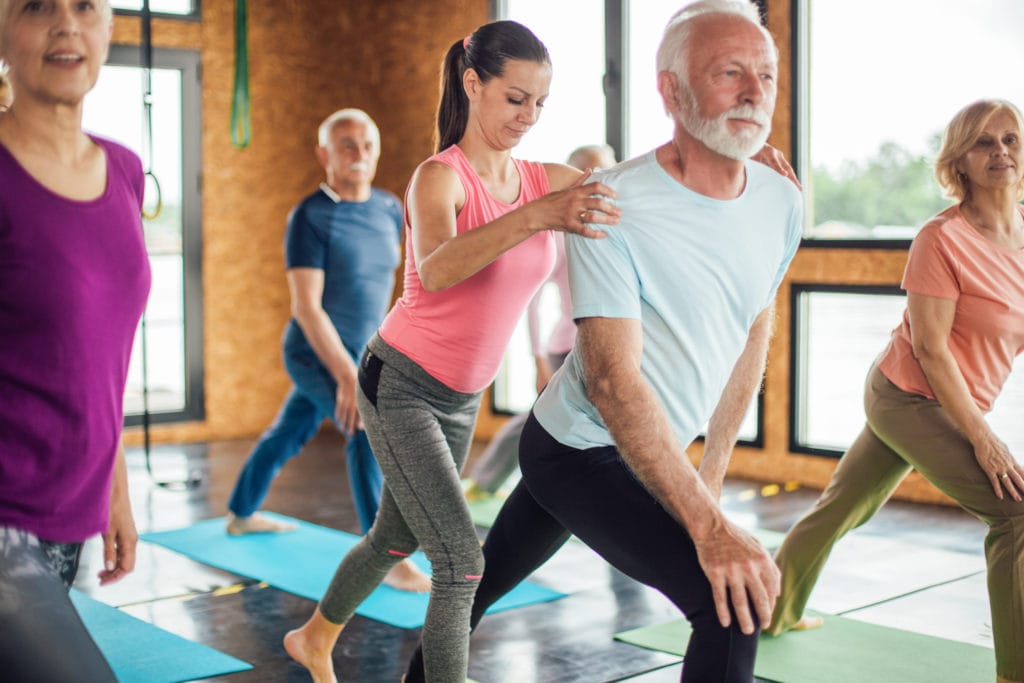
Yoga offers an effective, low-impact solution for managing osteoporosis and improving bone health. By incorporating weight-bearing poses, gentle backbends, and upper-body strengthening exercises into your practice, you can help stimulate bone growth and prevent further bone loss. Yoga also provides the opportunity to connect with your body and emotions, promoting self-awareness and healing from within.
For optimal results, combine yoga with a nutrient-rich diet and a consistent exercise routine to support bone health. Remember, always consult your doctor before starting any new exercise regimen, especially if you have osteoporosis or low bone density.
With patience, consistency, and mindfulness, yoga can be a powerful ally in managing osteoporosis, strengthening bones, and improving overall health and well-being.
For a complete list of osteoporosis-friendly yoga poses and sequences, explore our premium yoga therapy section and Building Strong Bones yoga sequence.
Calculation of Bone Health and Osteoporosis Risk
When it comes to managing osteoporosis, bone density plays a significant role in determining risk levels. For individuals with osteoporosis or osteopenia (low bone density), understanding the condition and its progression can be helpful. Bone density is typically measured by a Dual-Energy X-ray Absorptiometry (DEXA) scan. This scan compares your bone density to that of a healthy adult of the same age and
